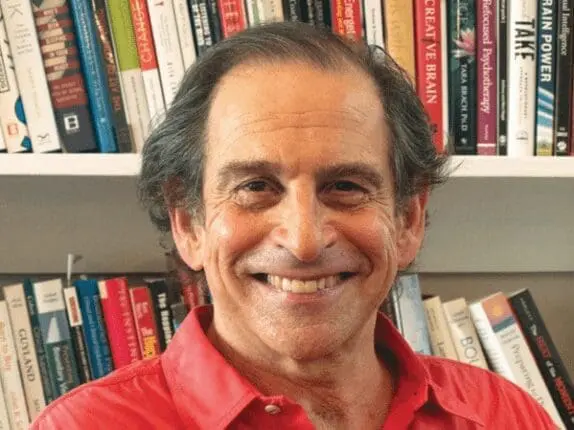While researchers tell us that psychopaths apparently don’t feel much anxiety, this immunity to a sense of vulnerability doesn’t extend to the rest of us. Through our lives, most of us develop what can only be called a deeply personal relationship with our anxiety—at least as close a connection as with our partners, families, and best friends, maybe closer. There’s a good reason for this. A predilection for anxiety was built into our neurophysiological wiring as a kind of evolutionary early-warning system for us hominids in an unpredictable, often hostile environment. Anxiety, in this sense, is like a loyal, somewhat skittish guard dog—maybe too easily aroused, but handy to have growling around the cave when intruders threaten.
As we all know, that good dog can morph into a vicious mongrel that turns on its own master, and no “Down, boy!”—no telling our anxiety that there’s really nothing to be anxious about—will have the least effect. Anxiety, no matter what its form or content—and there’s almost nothing in the world that doesn’t make somebody anxious sometimes—becomes a living thing unto itself, a dark, foreign presence, which fills body and mind with foreboding, the sense that something is profoundly not right with the world.
I think that just after 9/11, Americans experienced a collective attack of hyperanxiety, when many of us—wondering what enormity would come next—felt as if a continual state of low-level dread had made itself at home in the fibers of our being, never far from conscious awareness. Eventually, however, that unwelcome intruder did fade into the background, more or less. We didn’t deny that what made us anxious—the possibility, even probability, of more terrorist attacks—could happen again, but with time and no further catastrophes, we gained a sense of distance and perspective on our anxiety and what caused it.
This collective recovery from hyperanxiety mirrors the developmental trajectory of the personal relationship most of us develop with our anxieties as we grow and mature. In fact, one of the consolations of aging is that, by and large, we gradually leave old anxieties behind and learn how to better handle the newer ones that keep popping up like warts. But this escape from the tyranny of anxiety doesn’t happen for everybody. Indeed, anxiety is the leading presenting problem in therapists’ caseloads around the world. It’s to the clinical challenge of helping these people—those in whose lives anxiety continues to be a central, heart-pounding, nausea-causing, sweat-inducing presence, without remotely reasonable connections to genuine threats—that this issue is addressed. In a world full of threats and occasional horrors, the magazine may also serve as a source of solid information, good advice, and comfort to the legions of us whose worries don’t quite make it to DSM levels.
——
If this issue is about anything, it’s how the craft of treating anxiety, the most common of presenting issues, has evolved so rapidly in recent decades. If you’re interested in the evolution of our craft across the full clinical spectrum, the one place to be is this year’s Networker Symposium, The Therapist’s Craft: Healing Connection in a Digital World, to be held this March in Washington, D.C. No matter what your clinical specialty, here’s your opportunity to develop your own road map to bring your skills to the highest level of development at psychotherapy’s largest and most celebrated relationship craft fair.
Rich Simon
Richard Simon, PhD, founded Psychotherapy Networker and served as the editor for more than 40 years. He received every major magazine industry honor, including the National Magazine Award. Rich passed away November 2020, and we honor his memory and contributions to the field every day.












